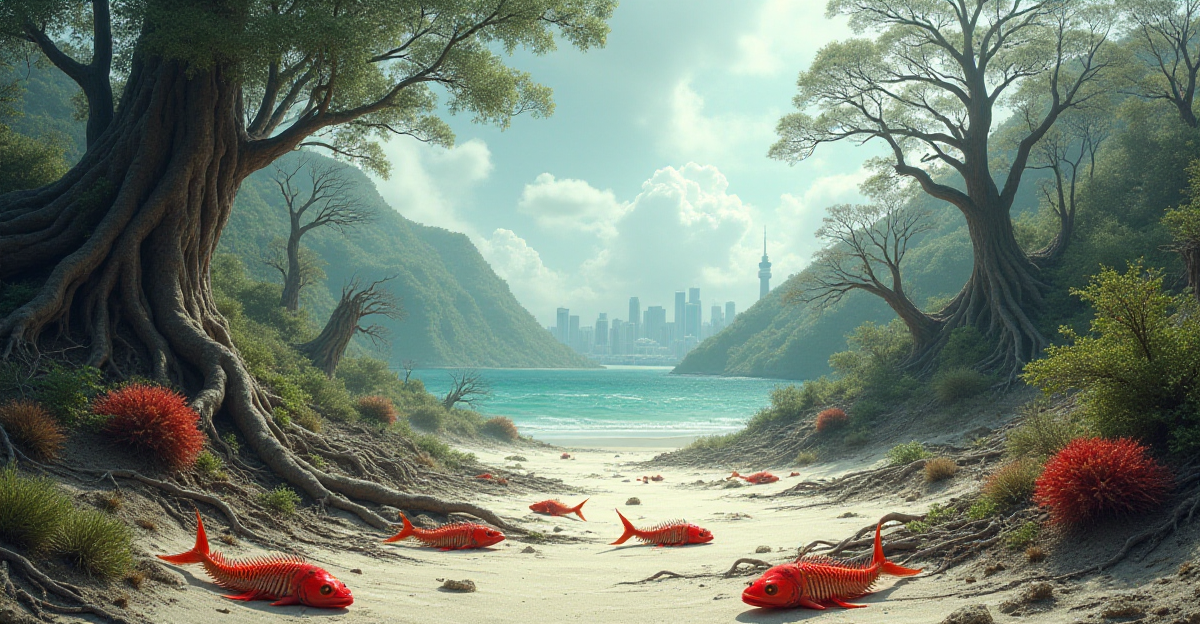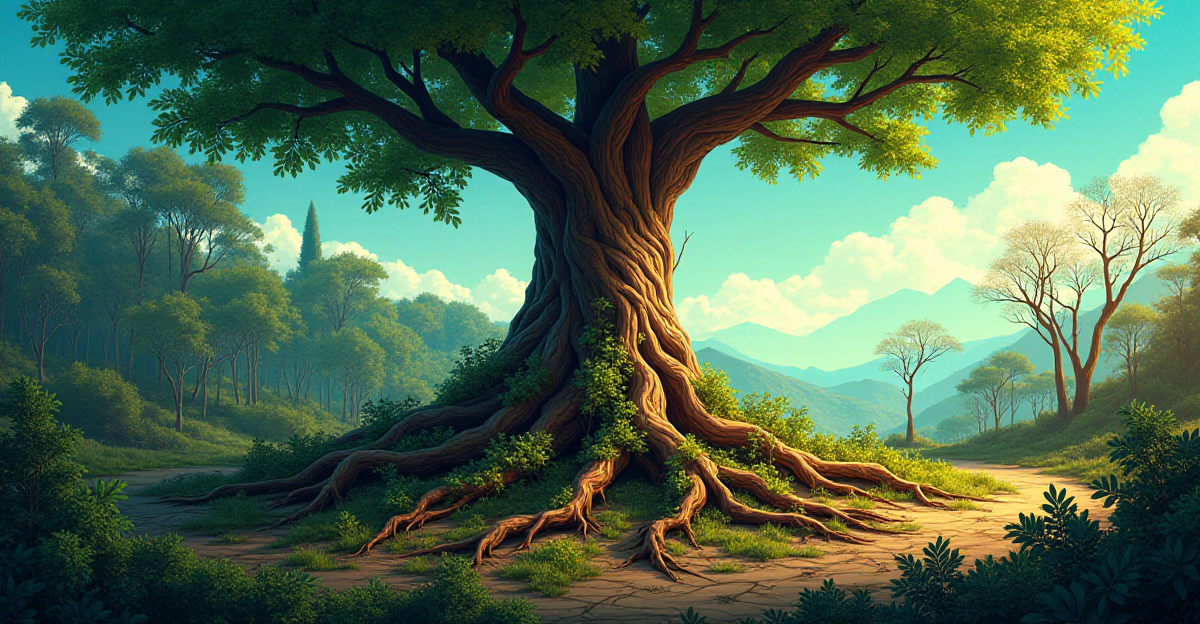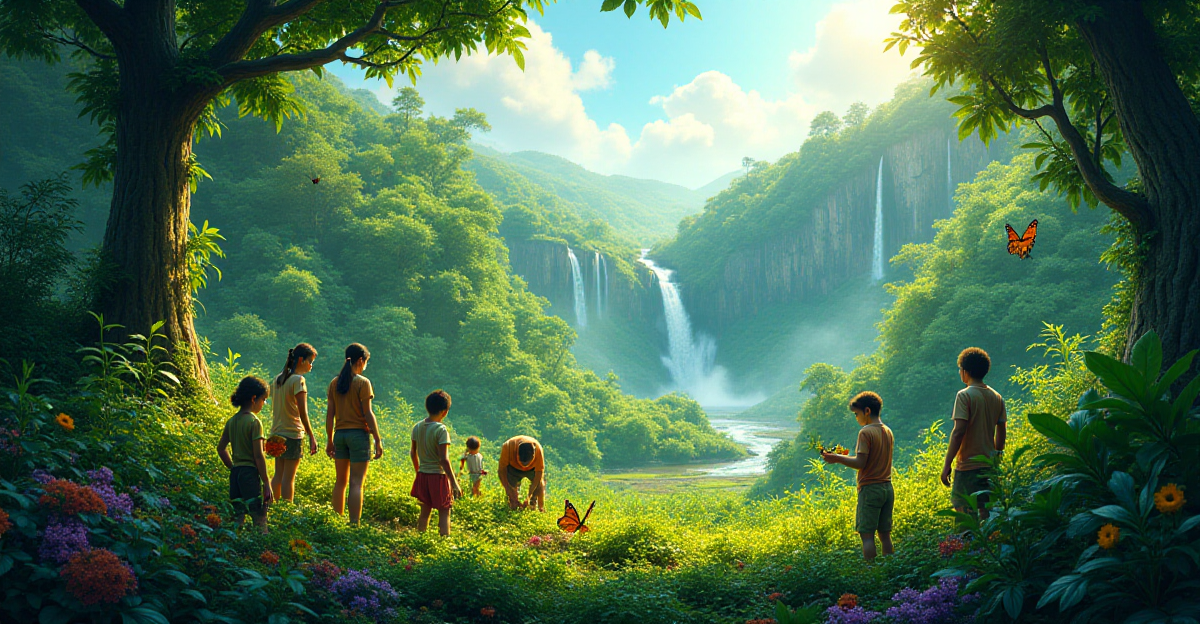Unprecedented loss of biodiversity endangering ecosystems and human life is occurring worldwide. The reasons of biodiversity loss, its consequences on the earth, and possible solutions for preservation of our natural surroundings are investigated in this paper.
Table of Contents
- What Is Biodiversity Loss?
- How Biodiversity Loss Affects Ecosystems
- Solutions to Combat Biodiversity Loss
- Extra’s:
What Is Biodiversity Loss?

Imagine a future in which vivid coral reefs have turned ghostly white, where bustling bees have vanished from our gardens, and where once-vibrant forests lie quiet and empty. This is the terrible truth of biodiversity loss, a crisis endangering the basic basis of life on Earth. It’s about losing the complex web of life that keeps us all alive, not alone about losing particular species.
The biological diversity of our planet is declining, and this is happening shockingly quickly. From the air we breathe to the food we consume, this loss influences everything and has broad effects on the surroundings as well as human civilization.
Understanding the Effects of Biodiversity Loss
Consider the ecosystems we depend on: the air we breathe, the water we drink, the food we eat – all of which are rich tapestry of plants, animals, and bacteria. Biodiversity loss has a noteworthy environmental impact. Strong and robust is a varied ecosystem; nevertheless, as species disappear, the ecosystem becomes prone to collapse. A forest dominated by one type of tree, for instance, is more vulnerable to pests and diseases.
When a species vanishes entirely from Earth, species extinction results. This follows directly from biodiversity loss. A species that goes extinct might have a knock-on impact on the food chain, upsetting fragile ecological balances and maybe causing other species to fade or disappear.
The Causes of Biodiversity Loss
Several important elements help to explain the concerning speed of biodiversity loss:
- Habitat Loss and Fragmentation: As human populations grow, we continue to encroach on natural habitats, destroying forests, wetlands, and grasslands to make way for agriculture, development, and infrastructure. This pushes many species to the brink of survival, struggling for space and resources.
- Climate Change: Rising global temperatures, changing rainfall patterns, and more frequent extreme weather events are pushing species beyond their tolerance limits. Many species are struggling to adapt to these rapid changes, leading to population declines and even extinction.
- Pollution: Air, water, and soil pollution contaminate habitats, making it difficult for organisms to thrive. This pollution can disrupt ecosystems and impact the health of both humans and wildlife.
- Overexploitation: Excessive hunting, fishing, and logging can decimate populations, disrupting delicate ecological balances. The demand for certain species, whether for food, medicine, or fashion, can lead to unsustainable harvesting practices.
- Invasive Species: The introduction of non-native species into new environments can outcompete native species, leading to their decline or disappearance. These invasive species can disrupt food webs, introduce diseases, and alter habitats, causing significant ecological damage.
The Consequences of Biodiversity Loss
Biodiversity loss affects not just the surroundings but also directly human well-being and our capacity to flourish. Important ecosystem services upon which we rely for survival are disappearing.
- Ecosystem Collapse: The loss of key species can lead to the collapse of entire ecosystems, disrupting essential processes like pollination, seed dispersal, and nutrient cycling. For example, the decline of pollinators like bees is impacting the production of our food, threatening food security.
- Reduced Ecosystem Services: We rely on ecosystems to provide essential services like clean air, water, and fertile soil. Biodiversity loss can diminish these services, impacting human health, economic well-being, and even our ability to adapt to climate change.
- Climate Change Amplification: Intact ecosystems play a crucial role in regulating climate. Loss of biodiversity can exacerbate climate change by reducing carbon sequestration and other vital processes that help mitigate the effects of greenhouse gases.
- Food Security: Many food crops rely on pollination and other organisms for successful growth and production. Biodiversity loss can threaten food security by reducing crop yields and increasing reliance on monocultures, which are more vulnerable to pests and diseases.
- Loss of Cultural and Economic Value: Many species have cultural and economic value, contributing to tourism, recreation, and traditional medicine. Their loss represents a loss of valuable resources and cultural heritage, eroding the diversity of our human experience.
How Can We Stop Biodiversity Loss?
Protecting biodiversity calls for cooperation among people, governments, and businesses, thereby including everyone. You may help to defend the amazing biodiversity of our earth. Let’s cooperate to guarantee a time when thriving ecosystems abound. You could follow these guidelines:
- Reduce Your Environmental Impact: Minimize your consumption of resources, support sustainable businesses, and choose products that are sustainably sourced.
- Support Conservation Efforts: Donate to or volunteer for organizations dedicated to conserving habitats and protecting endangered species.
- Educate Yourself and Others: Learn about the importance of biodiversity and share your knowledge with others to raise awareness of the crisis.
- Be a Responsible Citizen: Vote for leaders who prioritize environmental protection and support policies that address biodiversity loss.
Collectively, we can help to protect the amazing biodiversity of our world for next generations. Though it is a difficult problem, biodiversity loss can be avoided by knowing its causes and acting accordingly to help preserve the natural environment sustaining all of us.
How Biodiversity Loss Affects Ecosystems

Imagine strolling over a rich woodland surrounded by the vivid melody of the surroundings. Every component of this ecosystem—from the humming insects to the rustling leaves—is absolutely essential for preserving its fragile equilibrium. The basis of the health of our world is this amazing variation of life, sometimes known as biodiversity. But the loss of biodiversity is a rising concern that affects not only the environment but also our own quality of living.
Biodiversity loss disturbs the complex interactions in ecosystems, thereby having major effects on the world overall. These effects span everything from food security and water quality to climate control and human health. Though we sometimes take these vital ecosystem services for granted, consider a world without them in which food becomes more difficult to obtain, clean air and water are rare, and extreme weather events become more frequent. Should we neglect to act to mitigate biodiversity loss, this is the harsh truth we live with.
The Interconnectedness of Life and Ecosystem Services
Maintaining the equilibrium of ecosystems depends critically on every living entity. By means of resilience, biodiversity serves as a buffer against disruptions including species extinction, climate change, and invading species. Consider the passenger pigeon, once the most often occurring bird species in North America. Early 20th century extinction of the passenger pigeon brought on by habitat loss and overhunting had major effects on the ecology. Its extinction changed the woodland scene and upset the ecological equilibrium, which helped other species to vanish.
Environmental Impact of Biodiversity Loss
With its major environmental impact, biodiversity loss is changing the basic fabric of our planet. The loss of biodiversity disturbs ecosystem dynamics, therefore reducing important services including pollination, water filtering, and carbon sequestration. For agricultural output, for instance, the loss of pollinators such bees, butterflies, and hummingbirds can have catastrophic effects.
Without the biological diversity we take for granted, picture our planet. The environmental impact of biodiversity loss compromises the whole web of life that keeps us alive, not only the loss of any one species.
By choosing wisely and acting in our local communities, everyone of us may help to preserve the biodiversity of our earth. Let’s decide one action we might take right now to safeguard biodiversity and guarantee a good future for next generations. Perhaps it’s helping a nearby natural preserve, lessening our carbon impact, or supporting environmental laws. No matter how little an activity is, it counts.
Solutions to Combat Biodiversity Loss

Imagine a world devoid of the vivid hues of coral reefs, the melodic voices of birds, or the great variety of vegetation sustaining our earth. Though the loss of species, decreasing ecosystems, and species extinction endanger not only our natural environment but also our own life. One of great worry is the extinction of species. Another indication of a bigger issue are declining ecosystems. Species extinction compromises not just our planet but also our basic existence. We have to act to save the fragile network of life on Earth.
Protecting Habitats and Promoting Sustainable Practices
We have to safeguard the ecosystems of many different kinds. This entails setting and supervising protected areas like wildlife sanctuaries and national parks. It also implies ensuring that our usage of the land does not damage the surroundings. Conservation is the protection and management of natural resources for current and next generations. From urban planning to industrial development, we must include conservation into all we do so that economic growth fits environmental protection. Essential include restoring damaged ecosystems, tree planting, and support of sustainable farming methods that cut pesticide use and soil erosion.
Real-Life Example:
Let we consider the Giant Panda. Once they were on certain extinction. The Giant Panda count has steadily grown thanks to committed conservation activities like reforestation and habitat protection. Other threatened species have hope based on this success narrative.
Supporting Conservation Organizations and Raising Awareness
Conserving nature calls for group efforts among people, businesses, and communities. Everyone of us can help by supporting environmental groups. These groups labor nonstop to track, investigate, and teach about biodiversity. We may give of our time, support their projects, and demand more robust environmental laws. Furthermore crucial is increasing understanding of the value of biodiversity. Sharing knowledge on the effects of species loss can help to motivate behavior on local, national, and worldwide levels.
The Power of Education
Consider a schoolchild discovering the need of preserving a certain ecosystem. They could start advocating for change and raise knowledge of it among their neighborhood. Talking about the interdependence of all living entities and supporting environmental education helps individuals to become stewards of the earth.
Embracing Sustainable Consumption and Responsible Choices
By adopting sustainable living in our daily life, everyone of us can help to slow down biodiversity loss. We may choose sustainably produced goods, cut our resource use, and help companies dedicated to environmental responsibility. To further reduce our carbon footprint, we can also choose sustainable means of mobility such public transit, walking, and cycling.
Small Choices, Big Impact
Every personal decision counts. Making deliberate shopping decisions helps us to contribute to a better earth. Our choices affect everything we consume, including food and goods we purchase. Think on the effects of selecting a reusable water bottle rather than a one-time plastic one. Though little, scaled among millions of individuals, it makes a significant difference.
Let’s cooperate to make sure that the beauty and wonder of Earth’s biodiversity will continue astounds next generations. One should act right immediately. Everyone of us can help to preserve the priceless resources of our planet.
Extra’s:
To delve deeper into the intricate ways nature operates, you can explore “How Plants Talk: Exploring the Secret Communication Between Plants,” a blog post that reveals the fascinating world of plant communication. Understanding these complex interactions sheds light on the delicate balance within ecosystems and the profound impact of biodiversity loss.
For further information on the alarming statistics surrounding biodiversity loss, visit “Biodiversity loss – statistics & facts | Statista.” This comprehensive resource provides insightful data on the scale of the problem, highlighting the urgent need for action. To learn more about potential solutions to this crisis, check out “7 Solutions to Biodiversity Loss | Earth.Org,” which explores practical strategies for protecting and restoring biodiversity.












1 thought on “Biodiversity Loss: Understanding the Impact on Ecosystems and Humanity”